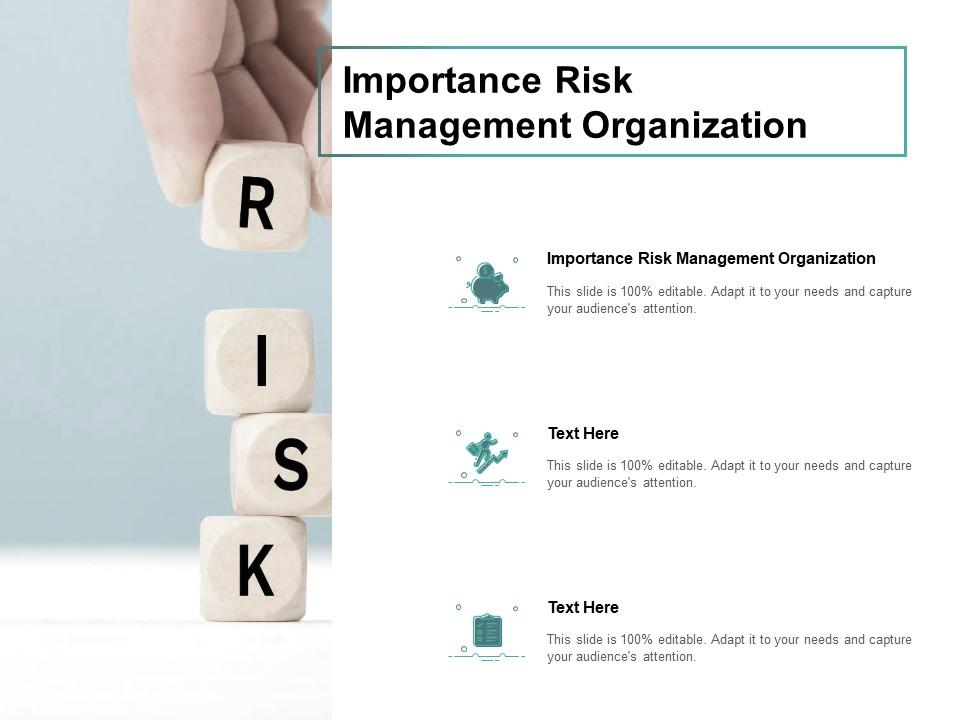How the Importance of Risk Management Shapes Strong Leadership
How the Importance of Risk Management Shapes Strong Leadership
Blog Article
Exploring the Value of Risk Management for Effective Decision-Making Methods
In the detailed globe of service, Risk Management arises as an essential aspect in the decision-making procedure. The ability to determine possible dangers and possibilities, and strategize accordingly, can lead to the distinction in between success and failure.
Recognizing the Concept of Risk Management
Risk Management, an essential element in decision-making, is commonly misinterpreted or oversimplified. Typically, it refers to the identification, assessment, and prioritization of threats to lessen, check, and manage the possibility or effect of unfavorable occasions. It's not simply concerning avoiding negative results, however also regarding identifying potential opportunities. Risk Management entails structured and regimented methods, making use of data and insightful evaluations. It requires a detailed understanding of the organization's context, objectives, and the prospective risks that might prevent them. From economic uncertainties, lawful responsibilities, strategic Management mistakes, to accidents and natural catastrophes, it deals with numerous threats. Notably, efficient Risk Management is not stationary; it's a constant, positive procedure that develops with altering circumstances.
The Function of Risk Management in Decision-Making Processes
In the world of tactical planning and organization procedures, Risk Management plays an important role in decision-making procedures. Risk Management thus ends up being a crucial device in decision-making, aiding leaders to make informed options based on a detailed understanding of the risks involved. Risk Management serves as a crucial component in the decision-making procedures of any kind of organization.

How Risk Management Improves Strategic Preparation
In the context of critical preparation, Risk Management plays a crucial function. Starting with the recognition of prospective threats, it further encompasses the application of Risk reduction procedures. The role of Risk Management is not static but dynamic, as it demands consistent surveillance and adjusting of approaches.
Recognizing Potential Dangers

Executing Risk Mitigation
Having actually developed the importance of determining potential risks, the next step is to check out Risk reduction. This procedure includes establishing and implementing methods to handle identified risks properly. It is a crucial facet of strategic planning as it improves decision-making by decreasing possible negative results. Risk reduction methods can range from Risk evasion, Risk transfer, to risk reduction. Each method must be tailored to the certain Risk, considering its prospective influence and the organization's Risk tolerance. In addition, reliable Risk mitigation needs a deep understanding of the Risk landscape and the potential influence of each Risk. This understanding allows companies to focus on risks and assign sources properly, ensuring that the most significant threats are addressed first.
Surveillance and Readjusting Approaches
Though Risk mitigation is a vital action in critical planning, continuous monitoring and modification of these methods is equally vital. This recurring process enables companies to identify brand-new risks and reassess existing ones, guaranteeing the executed approaches continue to be effective in the ever-changing service environment. It also supplies a chance to review the success of the Risk Management steps, enabling modifications to be made where necessary, further improving strategic preparation. Effective tracking and change need making use of analytics and crucial efficiency indicators (KPIs) to determine performance. These devices offer useful data-driven understandings that can notify tactical decision-making. As a result, surveillance and changing Risk Management approaches is an essential component for boosting a company's resilience and tactical planning.
Situation Researches: Effective Risk Management and Decision-Making
Worldwide of Discover More Here company and financing, successful Risk Management and decision-making frequently serve as the columns of flourishing ventures. One such entity is a multinational oil company that mitigated monetary loss by hedging versus changing oil costs. In an additional circumstances, a tech startup flourished by determining and approving high-risk, high-reward methods in a volatile market. A global bank, confronted click this with governing unpredictabilities, successfully browsed the circumstance through positive Risk evaluation and dynamic decision-making. These cases highlight the worth of astute Risk Management in decision-making procedures. It is not the absence of Risk, but the Management of it, that often distinguishes effective business from not successful ones. These situations underscore the essential function of Risk Management in calculated decision-making. importance of risk management.
Devices and Methods for Efficient Risk Management
Browsing the complex puzzle of Risk Management requires the appropriate set of strategies and devices. These devices, such as Risk signs up and warm maps, help in identifying and analyzing potential threats. Methods include both quantitative methods, like level of sensitivity analysis, and qualitative techniques, such as SWOT evaluation. These assistance in prioritizing risks based upon their potential influence and possibility. Risk response techniques, a crucial element of Risk Management, include accepting, avoiding, transferring, or mitigating dangers. Tracking and managing dangers, via regular audits and reviews, guarantee that the methods stay efficient. With these tools and methods, decision-makers can browse the facility landscape of Risk Management, therefore assisting in notified and reliable decision-making.
Future Trends in Risk Management and Decision-Making Methods
As we discover the vast landscape of Risk Management, it comes to be noticeable that the strategies and tools utilized today will certainly proceed to evolve. The concept of Risk society, where every member of a company is mindful and entailed in Risk Management, will certainly get more importance. These patterns herald a more comprehensive and proactive method towards Risk Management and decision-making.
Conclusion

Risk Management hence becomes an essential tool in decision-making, assisting leaders to make enlightened options based on an extensive understanding of the risks entailed. Risk reduction approaches can vary from Risk avoidance, Risk transfer, to run the risk of decrease (importance of risk management). Reliable Risk reduction calls for a deep understanding of the Risk landscape and the prospective influence of each Risk. Risk feedback strategies, an essential part of Risk Management, involve approving, preventing, transferring, or mitigating threats. The idea of Risk society, where every member of an organization is conscious and included in Risk Management, will get more prestige
Report this page